‘Time to keep the momentum going’: Hannah Diamond on the future of women’s sailing

The inaugural Women’s America’s Cup in Barcelona in 2024 was more than just an elite sailing event – it was a landmark moment in women’s sport.
For the first time in its 173-year history, female athletes competed at the sport’s pinnacle event in an all-female environment, breaking barriers into a traditionally male-dominated competition and proving that they have the talent, grit, and technical expertise to race high-performance foiling boats at the highest level.
Hannah Diamond was a key member of the Athena Pathway British women’s team led by double Olympic gold medallist Hannah Mills OBE, which reached the very first Puig Women’s America’s Cup final against Italians Luna Rossa Prada Pirelli.
She will be sharing her experiences and discussing the opportunities ahead for female sailors at this year’s RYA Dinghy & Watersports Show (22-23 February at Farnborough International), but we caught up with her beforehand to reflect on a history-making year and what it all means for the future of women in sailing.
Breaking new ground
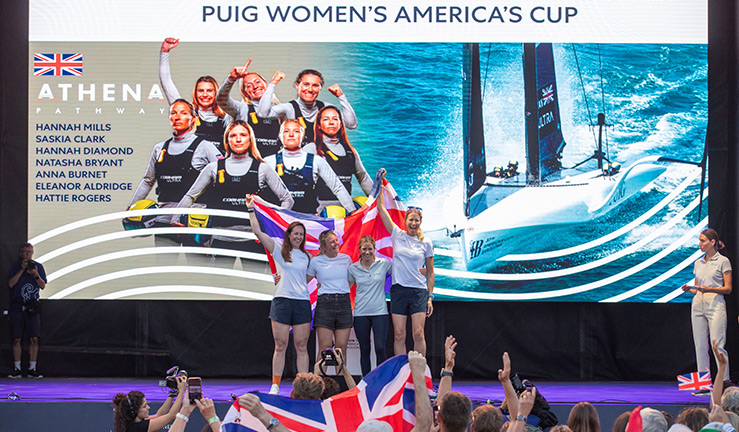
“It was such a huge year for women’s sailing and it was incredible to be a part of it,” Hannah said. “I was fortunate enough to be on the race boat as the port trimmer, and we came a really close second in the final.
“But more importantly, it was a huge step forward for women's sailing, and now it’s time to keep the momentum going.”
An accomplished sailor across multiple disciplines, Hannah progressed through the Athena Pathway trials process, where female and youth sailors keen to race for Great Britain in the cup were put through their paces and given the opportunity to train and race on foiling boats.
Extensive simulator training played a crucial role in the process, and in preparing the sailors who would ultimately race at the event for the speeds and complexities of the cutting-edge AC40 boats used by the Women’s and Youth America’s Cup teams.
“There was a huge emphasis placed on the number of hours we needed to do on the simulator. I mean, it’s stepping on a boat that's going to do 40 knots quite easily if you get it right and set it up well, so we really had to understand all of the controls,” Hannah explained.
“It's actually a really complex boat in terms of electronics and hydraulics, so we had to make sure we did all of that in a safe way before we got on the water.”
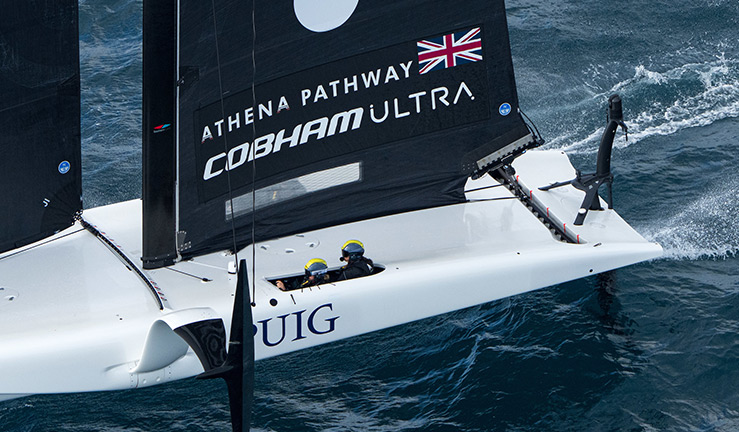
Although Hannah had had plenty of experience of foiling boats, through her Nacra 17 Olympic campaigning with the British Sailing Team and involvement with the Emirates GBR SailGP team, her first outing in the AC40 remained a breathtaking moment.
“I remember my first sail really clearly, and my first flight was just unbelievable. It’s kind of strange because you don’t get the sensation of speed and you almost can’t tell you’ve really taken off.
“I'd done quite a lot of foiling sailing by the point I got on the AC40. I've been involved in SailGP for the years leading up to this year, but the AC40 is not like anything I'd ever sailed before.”
Forging a world-class team
The Athena Pathway women's and youth teams developed as a collective with the ability to tap into knowledge and talent from Sir Ben Ainslie’s INEOS Britannia Cup team.
“We trained as one big team, so we didn't separate into women and youth till quite close before the competition,” Hannah explained.
“We were able to bring in some of the knowledge from INEOS Britannia because they'd done a lot of AC40 sailing in the build-up, before we'd been able to have access to the boats, so we really tried to make the most of their experience and their knowledge and bring some of the sailors across and some of their coaching expertise to fast track our learning.
“It was really interesting because the women and youth [teams] had really different skill sets and experiences, so we just tried to take the best of all of those experiences and have the best outcome for both teams.”
Emotional highs and lows
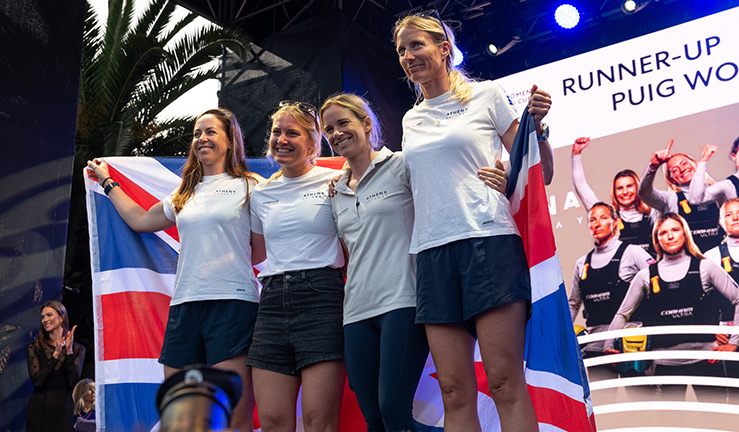
The Women’s America’s Cup was an emotional journey for Hannah and her teammates with the dock-out on their first race day among the memories she carries with her.
“We had the whole INEOS Britannia team waving us off, just like we had supported them in their racing. It was a really emotional time — we knew we were creating history in that moment,” she recalls.
“And then it was really great to see how the team stepped away from that emotion on the dock, put our game faces on and managed to win the first race by quite a long distance. It showed the grit and resilience we had in the team, while also acknowledging the part of history that we were having."
However, the event was over almost as quickly as it had begun. After months of build-up, the final came down to a single 15-minute race.
“That was the hardest part,” Diamond admits. “We felt like we were just getting into the swing of our racing when it ended. We all had that feeling of wanting to keep doing this kind of racing.”
Since returning home, Hannah has ridden the waves of emotion that inevitably come after an event and achievement of that magnitude. But she’s clear that it was just the beginning of the story.
“I think for me the important thing is that we were part of the first ever Women's America's Cup and it's really important that it isn't the first and only.
“Now's the time to really consolidate on what we've achieved as women in sailing, taking away those boundaries between the teams and stepping up and saying actually what are the next steps we need to take. We’ve proved that we can race a really high level in these boats, and so what is the next step going forwards.”
The road ahead
One of the key debates that remains across sailing is the balance between opportunities for all-female teams or creating more integration through mixed gender teams.
“I’ve always been a huge advocate of mixed sailing,” Hannah said, reflecting on her experience in the Nacra 17 Olympic class and offshore racing. “But there was something really special about sailing as an all-female team and really demonstrating that in all the roles on board we can do a really good job.
“So I'm kind of conflicted in myself about what I think is the best path forwards, but I think we really need to take up the space that we deserve in this arena of high speed foiling boats competing at the top level, so I'm really excited to hear the plans for the proposal for AC38.”
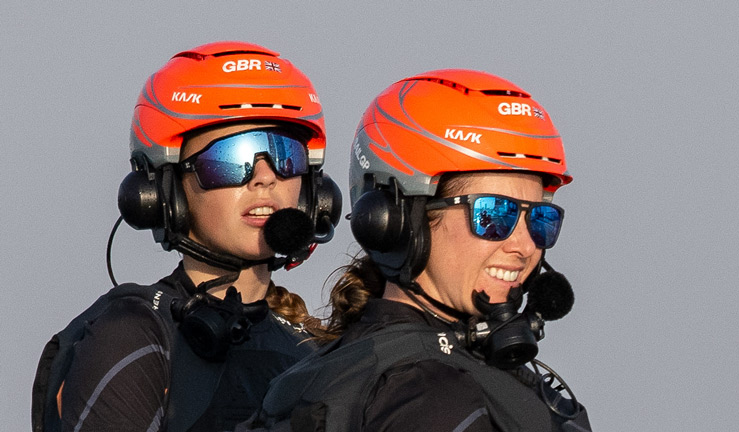
One of the biggest challenges remains access to on-board roles in high level competition.
“We had Olympic medallists in our team who weren’t able to race,” Hannah pointed out. “In the men’s side of the sport, that level of talent would be snapped up immediately. So while opportunities for female sailors are increasing, we still have a long way to go.”
Programmes like SailGP’s Women’s Pathway are helping to address this by integrating female sailors into existing teams. However, Hannah notes that at the moment, each SailGP team typically only has one female sailor onboard.
“We need to be able to increase the number of [women] who are able to be part of those team environments because that's the only way we're going to learn and grow to be able to compete at that level consistently.”
‘Follow your heart’
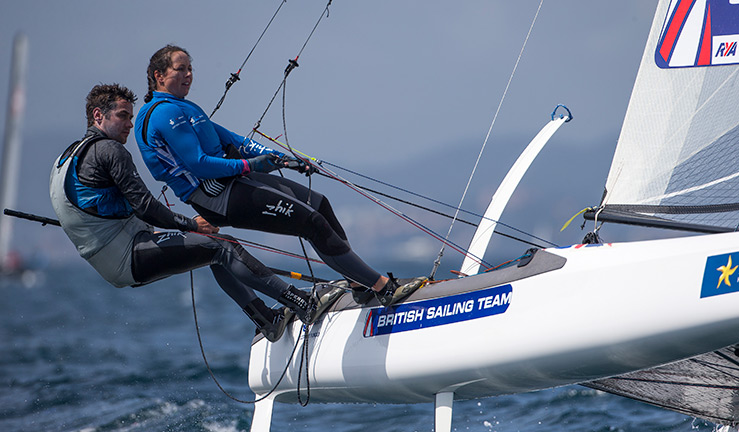
Hannah points to a broad and varied experience – across dinghies, the RYA Youth Pathway, Olympic classes, offshore racing, match racing, and now into foiling boats – as the biggest thing that's helped her find her continued love for sailing and being on the water.
For young female sailors looking to follow in her footsteps, her advice is simple: “Just get out on the water and enjoy yourself as much as you can.
“There are so many different classes and disciplines in sailing, and it’s OK to step off the well-trodden path. If you enjoy a certain class of sailing, a certain discipline, or you just want to sail with a certain group of friends, there is a part of sailing which will welcome you and you'll really enjoy. Don't be afraid to follow your heart and just enjoy being on the water.
“I want sailing to be a part of my life forever and that's taken me through all of these different parts of the sport. So I think [it’s about] finding ways to get on the water that you enjoy and if something isn't right there'll be another option for you.
“I think that's really, really helped that I just love being on the water and trying to be the best version of myself.”
Hannah Diamond will be sharing her America’s Cup experiences as part of the ‘High-fliers and history-makers’ talk at the 2025 RYA Dinghy & Watersports Show where she’ll also join Olympic gold medallist Eilidh McIntyre MBE and special guests for a ‘Female futures’ panel discussion, sharing top tips for helping women and girls to get active and stay on the water.
Join the conversation around creating more accessible and inclusive opportunities in sailing, boating and watersports with the RYA’s Reflections on Water campaign and help shine a light on the incredible individuals and activities that are shaping the future of our sport.
